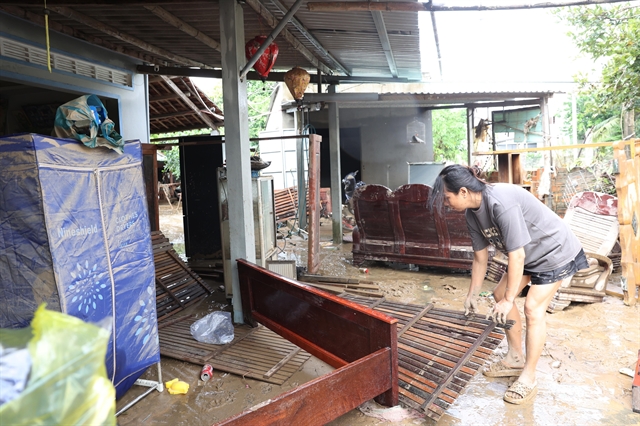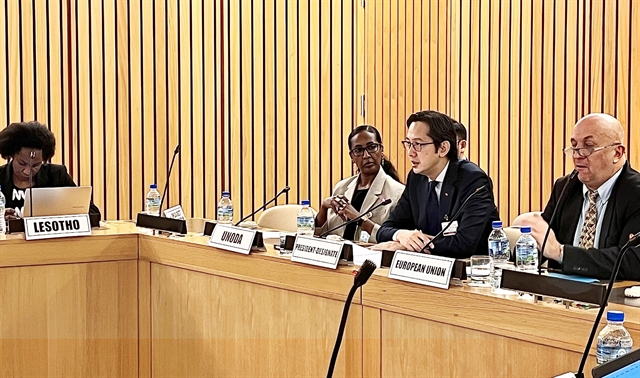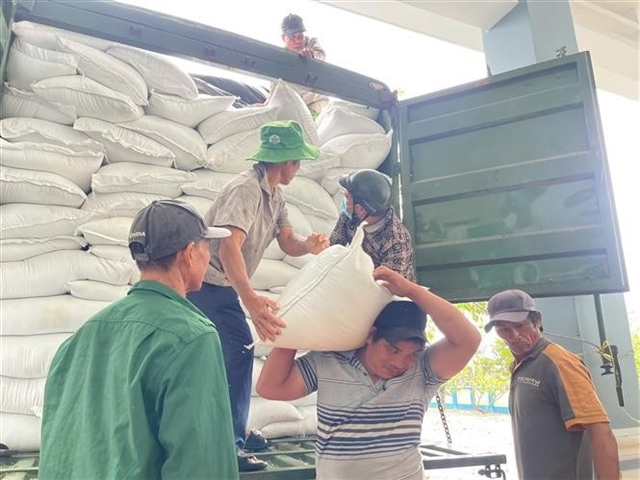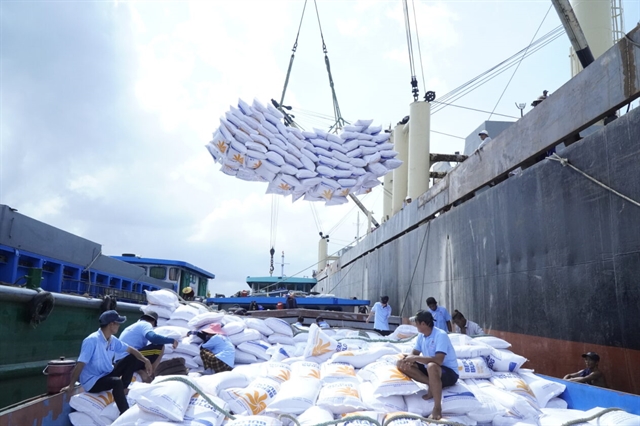 Economy
Economy
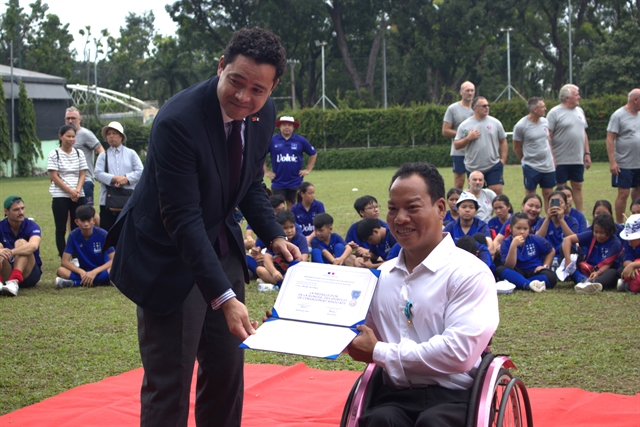
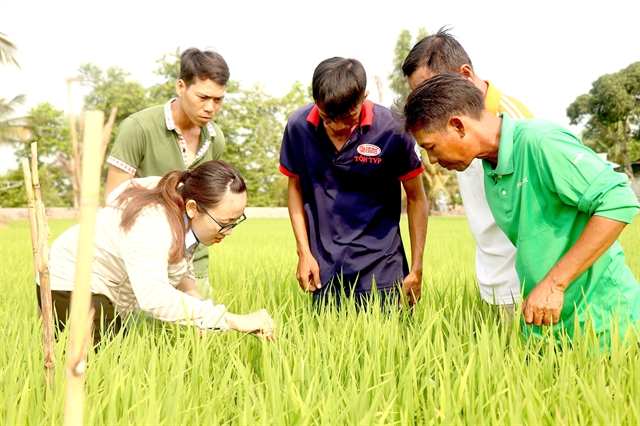 |
| An agricultural extension officer (left) trains farmers in monitoring the water level in a rice field that uses alternate wetting and drying irrigation. – VNA/VNS Photo Thu Hiền |
CẦN THƠ – More and more rice farmers in Cần Thơ City are using alternate wetting and drying irrigation (AWDI) to save water and other costs.
The method helps farmers reduce water consumption as their fields are not kept constantly submerged during the growing stage.
The number of days rice fields are not flooded can vary from one to more than 10 days depending on a number of factors such as soil type, weather and crop growth stage.
In Cờ Đỏ District, 91 per cent of the ongoing summer - autumn rice crop has AWDI.
Nguyễn Thị Bích Trân, deputy head of the district Plant Cultivation and Protection Station, said after rice plants fully flower farmers do not need to submerge their field, and irrigation is needed when the water level drops to 15 cm below the surface of the soil.
Before harvesting 15-20 days, farmers should not flood their fields to enable machines to move rice easily, she said.
Võ Văn Bé, a farmer in the district’s Thạnh Phú Commune, uses the irrigation method, and he said his rice crop has grown well, is strong and has fewer diseases.
The method helps reduce irrigation to three to four times per crop compared to seven or eight while using conventional irrigation methods, he said.
The district has enabled farmers to monitor the water level in their fields using their smart phones.
Phan Văn Ân, a farmer, said the facility helps manage the water level easier.
When the water level drops to about 15 cm below the surface of the soil, the app sends a message to his phone and he irrigates his field again, he said.
“With the facility, farmers can save the time they spend on visiting their fields and still feel assured that the fields do not lack water.”
The Cửu Long (Mekong) city has 75,000ha under rice, mostly in Vĩnh Thạnh, Cờ Đỏ and Thới Lai districts.
Phạm Thị Minh Hiếu, head of its Plant Cultivation and Protection Sub-department, said AWDI saves water and other costs, and is important to farmers in Cần Thơ and the whole delta amid climate change.
AWDI does not affect yields, and helps cope with the shortage of water in the dry season, she said.
It also helps reduce methane emissions and improves sustainability, she added.
High-quality rice
The Cần Thơ People’s Committee has issued a plan to implement the Ministry of Agriculture and Rural Development’s “project to sustainably develop one million hectares of high-quality and low-emission rice cultivation associated with green growth in the Mekong Delta to 2030.”
Under the project, the city aims to develop 38,000ha of high quality rice by 2025 and 48,000ha by 2030.
Vĩnh Thạnh, Cờ Đỏ and Thới Lai are the districts participating in the project.
They will reduce the use of seeds to 80 - 100 kg per hectare in 2025 and 70 kg in 2030 from 80 -120 kg now, and the use of chemical fertilisers and pesticides by 20 per cent and 30 per cent and water by 20 per cent.
It targets exports of high-quality rice accounting for more than 20 per cent of output.
To reach the targets, the city will take various measures like establishing rice growing areas, improving co-operatives and other players in value chains, investing in infrastructure, and helping farmers link up with companies that buy rice.
This year the city will set up a steering committee for implementing the project and organise advocacy activities, and appoint agricultural officers to transfer farming techniques to farmers. – VNS

